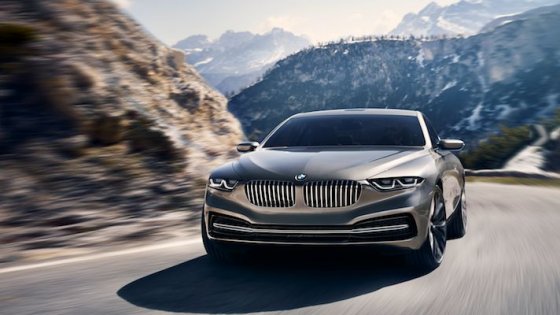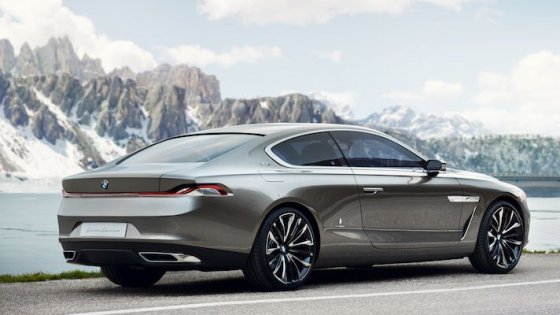Is it actually possible to have too many corners? Oh, crikey, dangerous question. Bends, curves, hairpins and kinks are the very pheromones that draw us to hot hatches. Confessing your greed for them has declined is like admitting to a wilting sexuality. But give me sympathy, because I feel like I'm in a spindryer. Two hours ago, I landed on Corsica and pedalled a roly-poly diesel MPV renter as hectically as it could manage to the site where the 208 GTi had started being shot for TopGear's feature. We meet just as the sky is fast-forwarding through orange and magenta to indigo and black. I strap into the 208 GTi and set off to where my bed is, under 10 kilometers away as the crow flies, but about 50 by the drastically convoluted Corsican roads.
At night, visibility is hemmed in to the range of the headlamps, or entirely obscured by rock walls. So all my steering and braking is last-minute, and I never get the opportunity to gently warn my stomach of what's coming up. And this randomised oscillation just goes on and on. And on some more. Eventually my innards stage a fearsome rebellion, I get the sweats, then make myself sick.
Next morning, down the same road, I'm having the sweats again, for different reasons. Daylight is making clear what would have happened had I fallen off last night. There are few barriers, no catch-fencing. Mess it up, go over, and you'd just keep dropping and dropping. About the time there's next an Olympic opening ceremony or David Bowie releases another studio album, you'd hit the sea.

Welcome to Corsica, then. We came because these roads are legendary. The Tour de Corse is one of the great tarmac rallies. Just as the Rally Finland was always known as the Thousand Lakes because that's what's Finland's like, so this one was Rallye aux dix mille virages, the Ten Thousand Corners. Take it from TG, even that number appears a considerable underestimate. Rally driving at 100 per cent along these cliff-hanging roads must take a special sort of lunacy. But there are also wonderful flowing sections along the island's uplands. Whatever I said in the opening sentence, it is a fantastical place to come and drive.
The Tour de Corse was where Ari Vatanen gave the Group B Peugeot 205 T16 its debut. That car later won five consecutive World Championship events, including at Corsica. In fact, the 205, 206 and 207 have all won here. Did you spot what we just did? Did you see how we brought you onto the thorny subject of Peugeot's hot-hatch history?
Ah, the old 205 GTI. It wasn't just the rightness of its styling that makes it a classic. Hardly was a front-drive car ever more sensitive to steer. It was so deliciously light and sharp and transparent. The engine felt zingily alive, the steering sharp as glass, and when you combined them - applying or lifting throttle in a corner - the car would adjust its pivot with instant ferocity.
Marvellous if you were expecting it, potentially catastrophic if you weren't. And so the 205 GTI was just the sort of hatchback you can't sell any more. It was so addictive precisely because it had no power steering, no ESP, and a chokingly emissive engine. Most of all, it was a car that would never pass today's stringent crash tests, while being all too prone to spontaneously imposing them on itself.
Ever since, Peugeot hot hatchbacks have softened and become more acceptable to societal norms, becoming ever more forgettable in the process. But now the 208 GTi is shorter than the 207 GTi, more powerful and 165kg lighter. Peugeot is putting it about that this latest effort is a car that, while doing right by NCAP and also emitting commendably few carbons, is fit to be compared to the mighty 205 GTI. Corsica will be a good litmus.
Versus the standard 208, the GTi takes the classic visual path to GTi-ness. Outside, you get bigger alloys, sill extensions, spoilers, a fat chromed exhaust tip, and new headlamps with LEDs for running lights and indicators. The chequer grille is a nice touch. Just in case you're old enough to remember (and I am) the position of the red GTI script behind the rear side window in a 205, here it is again. The cabin has reminders too: red stripes on the seat belts, red stitching on the wheel, red in the blocky pattern of the seat trim.

But it's plusher by a mile than the oldster. Much of the dash has a stitched leather covering, for instance. Turn the 208 on, and the instrument needles glow white, then swing through full-scale and back, then their numbers light, and finally a pair of red LED rings around each pair of clocks flick alight. It's a cute sequence, executed with quality. But - or is it just me? - the red-to-black plastic garnishes around the vents and doorhandles are a mite de trop.
The car's driving position is a vexed matter. The steering wheel is small and the dials mounted high on the dash, so you view the clocks over the top of the steering wheel rather than through its circumference. I happen to love it, because in any car, I always sit with my back upright and the steering wheel low and close to the dash. I'm also good with the GTi's seats and the support they give my bod, but you don't get much choice with them: there's no tilt adjustment or variable lumbar.
Others who sit more reclined than I do, find that the 208's wheelrim cuts across the dials. So try before you buy. Anyway, the small wheel makes the steering feel super-quick. But, of course, it also demands a high level of power assistance to overcome the high effective gearing. That has effects of its own, and we'll be on to that in a minute.
Under the skin, the 208 again follows the well-worn GTi groove. Mightier engine first: it's the regular Peugeot 1.6 direct-injection VVT turbo, but hopped up to 200bhp at 5,700rpm and 275Nm down at 1,700. The wide spread of those rpm numbers means it isn't too fussy about which of the six gears it's in. The car sits on a wider track, by 10mm at the front and 20mm at the rear. Higher-rate springs, dampers and anti-roll bars, reinforced subframe mounts, bigger brakes. You know the score.
It looks light and lithe. Because it weighs just 1,140kg, that little turbo engine gets it to 100kph in a sharp 6.8 seconds. Same as the Fiesta ST, which is likely no coincidence. In fact, all sorts of comparisons with the Fiesta are inevitable, and I've driven both. They're close enough that it's going to take a back-to-back drive to sort them out.
The engine is a fine match for these Corsican roads. The steering wheel is never, ever static, and you want to keep both hands on there because the corners often surprise you halfway round. So it's useful to be able to change gear when it suits you. If you haven't time to shift down to second, well, the turbo will dig you out of a corner in third. Beyond about 2,000rpm, lag never makes an issue of itself.
A highly strung naturally aspirated engine is great when you know the road, but when you're bombarded with surprises, it's better to have the flexible ally of a turbo. It doesn't have the synthesised snorting resonance of the Fiesta ST's engine, but the sound has a nice mechanical purity to it, and it's smooth and full of spirit all the way round the dial. The redline is at 6,200, but it's still sounding happy pulling hard at that point, so several times I went to pay my respects to the cutoff at 6,600.
The six-speed gearbox's wand moves through a rather lengthy arc, but it shifts with little resistance. So you've got a powertrain that's highly effective, if not quite inspiring. The brakes are strong and stable too, but there's a bit of sog in the pedal. Hmmm. So far so good, but if this is to be a great hot hatch, a lot depends on the chassis.
The 208's overhangs are visibly short, which adds to the expectation that it is built to turn. And so it proves, like a little swervy terrier. The steering is quick and proportional, perfectly weighted both around the centre and away towards the locks. The little white doggy dives smartly into each bend, the front tyres clinging on like they'd sacrifice their very toenails for you. There's equal grip from the back end too, so you simply pivot around with immense security.
But the terrier doesn't really want to wag its tail. I'm not asking for the crazy snapping-out of the 205 GTI, but compared with the way a Fiesta ST will slither according to throttle adjustments, the 208 GTi is just a little inert. And the steering could use a little more feedback too - but then, that's no different from the Fiesta.
The engineers will tell you this is what happens with electric steering. It's programmed to mask road shocks, and to cancel out torque-steer. True enough, on these crazy roads, with their cambered and cresting second-gear corners, the 208 scoots along without making the slightest mischief or troubling you. The steering doesn't fight, the car takes just the course you set. It's astoundingly effective. You can go like the clappers.
But really, is that what it's all about? Isolating the driver from the action? I mean, if you wrapped your tongue in a wodge of clingfilm, no doubt you'd be able to eat a hotter grade of curry than your normal. But a night at the Koh-i-Noor isn't just about a dogfight with the chilli; you want the well-crafted blend of subtle sensations.
And so, after a half-day in these second-gear mountains, and cliffside routes, the 208 isn't quite my new best friend. Which I feel mean saying, because it's a terrific work of engineering. It just devours these roads, thanks to its engine and traction and grip and agility and trustworthiness.
There's more too. It's got all you need to make it a car for every day. It looks great, the cabin works well, and the stereo's a cut above the small-car tinny norm. And there's a suppleness to the suspension that doesn't just mean it can career through a bumpy corner, it's also well calibrated not to crash in urban potholes or slap and judder down ridged A-roads. And the suspension is pretty quiet too, which was never the case in previous small Peugeots. See? Lots and lots to like. The problem is actually loving it.
Ah, but then we climb into uplands, where the roads get more open, the corners faster and the views even more remarkable. Not that I'm looking. Because now the car is coming more alive. It's still grippy and immensely chuckable, but it's letting me in on the party. There's more life to the steering: it lightens a little as the suspension stretches its legs over a mid-bend crest or the tyres ease their hold in a damp patch. It's subtle, but it's enough. I'm properly grinning now.
This isn't a 205 GTI reborn, and, in a way, Peugeot is being silly claiming it is. What it is, however, is a top-flight hot hatch for 2013. Nothing to be ashamed of there. Peugeot has come back to Corsica and made its mark again.
(Words: Paul Horrell, Pictures: Lee Brimble)
(http://www.topgear.com/india/car-gallery/a-peugeot-208-gti-around-10000-bends/itemid-89)













































